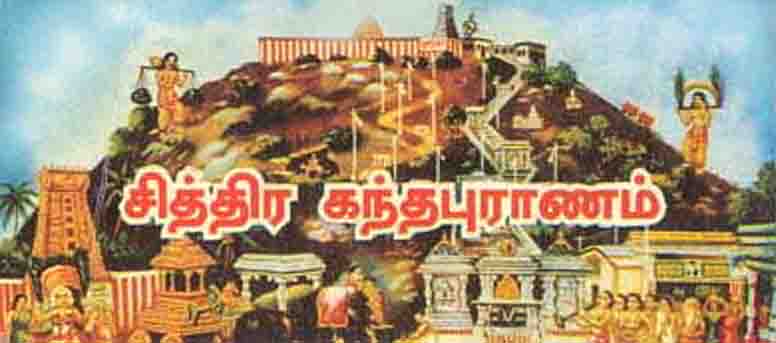Śri Kumāra Kôttam temple is located in Kāñchipuram, one of India's seven "moksha-puris" or sacred cities where salvation may be obtained. It is just half a kilometre to the northwest of the bus stand, on the west Raja Street at the north end of which is the Sankara Matham and at the south end is the Kachapeswarar Temple.
In this temple, the sacred Kanda Puranam in praise of Lord Muruga was composed by the saintly scholar Kachiappa Sivachariyar. According to the account of Kachiappa, each day he would write his inspired account of the career of Lord Murugan or Skanda, and in the evening deposit his day's work in the mûlasthānam of Lord Subrahmanya at Kumara Kottam. Each night, miraculously, the Lord Himself would modify Kacciappa's manuscript with His own corrections. Hence, the Kanda Puranam is considered to be the absolutely authoritative account of Lord Murugan's career bearing the seal of approval of none other than the Lord Himself.
According to mythology, Lord Muruga punished Lord Brahma for his ignorance of the meaning of the Pranava mantra, by a hard knock on his vortex with His fist and then imprisoned him. Later, He assumed the Creation duties of Lord Brahma. In this Kumara Kottam Temple, Lord Muruga installed himself in the sanctum in the 'Creator' (Brahmasasta) form.
A noteworthy feature is that all the deities of Kanchipuram, when they come out in procession during festivals pass before Kumara Kottam Temple invariably.
The scholar saint Arunagirinathar, who authored the 'Tiruppugazh' in praise of Lord Muruga, has composed the Tiruppugazh song 'Arivilappittar' eulogising Lord Muruga presiding over this temple.
The early 20th century saint Pamban Swamigal, who did not know the exact location of the Kumarakottam Temple, was guided to this temple by Lord Muruga Himself who assumed the form of a small boy.
The location of the Kumara Kottam Temple between Śrī Ekambereswarar Temple and Śrī Kāmākshi Amman Temple reminds devotees of theSomaskanda form in which Muruga sits in between Parvati and Parameswara.
Every Tuesday and every Krittikai is very auspicious to pray in this temple. The two most important festivals celebrated in this temple are Skanda Shashti immediately after Deepavali in October/Novermber and Vaisaka Festival in April/May every year.
The clean upkeep of this temple and the devout pujas performed by the priests are commendable features. The picturesque paintings on the walls of the temple in the inner periphery around the sanctum area rare treat to the eyes of devotees.

No comments:
Post a Comment